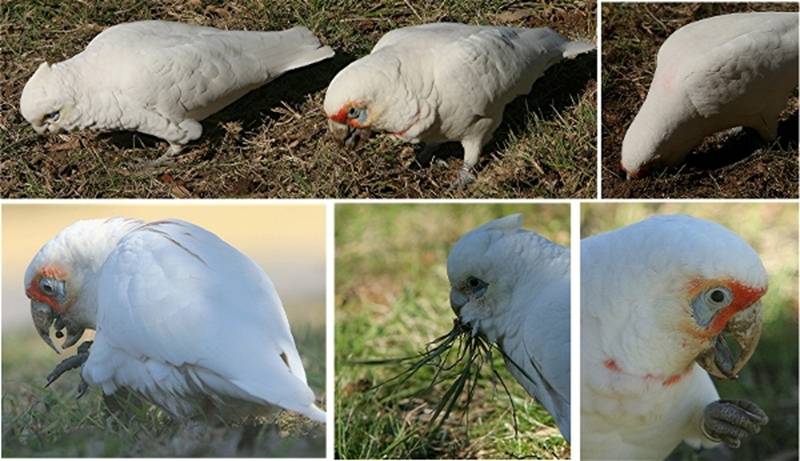Hi all,
The largest flock of Little Corellas I
have seen in Canberra was 111 birds feeding on the grass beneath trees on the median strip
on Parkes Way, between the foot bridge from Allara Street to Commonwealth Park and Coranderrk circle
pond, on 23 March 2005. Amongst this flock there were also 5 Long-billed Corellas –
also the largest number of this species I have seen in Canberra. The long-bills were
clearly dominant over the littles whenever a dispute occurred!
Harvey
Harvey Perkins
CRC Programme
ph (02) 6240 7103 fax (02) 6123 5525
-----Original
Message-----
From: Geoffrey
Dabb [
Sent: Tuesday, 27 June 2006 12:14
To:
Subject: [canberrabirds] Verges of
Griffith
There are a lot of white
cockatoos around Canberra streets, perhaps more than in the usual winter.
Each morning they are at work on the nature strips around Red Hill,
Narrabundah and Griffith, sometimes eating acorns under the pin-oaks, sometimes
attacking the roots of the plentiful weeds on the neglected verges. They
are mobile. This morning at 10 am there were more than 300 along about 500
metres of Sturt Street; by 1030 there were only a dozen or so. You
can easily approach to within a couple of metres of these birds that are so
wary in open country. About 12 Little Corellas, possibly our town birds,
were spread throughout the congregation, mainly in isolated pairs and not
flocking together. In past years I have seen as many as 70 corellas in a
single-species flock, and I think that represents a passing influx of a
different kind. I noticed one long-billed, forming a pair with an obviously
young little corella. In Canberra, I have never seen more than 2
long-billeds at the one time, although I know others have reported
groups. About half the time the long-billed I see is banded; one around
here has a wide metal band, and the one seen today has a narrow one
(below). The long-billed had a distinctive feeding technique, using its
long bill to excavate holes deep enough for its head to disappear into
them. It appears to be seeking the little bulbs that grow at the base of
some urban weed, and indeed can be seen tossing one in its mouth in one of the
below snaps.


